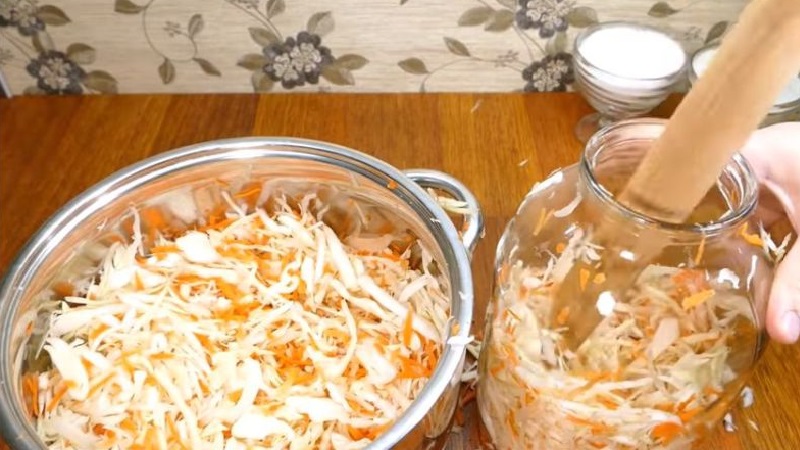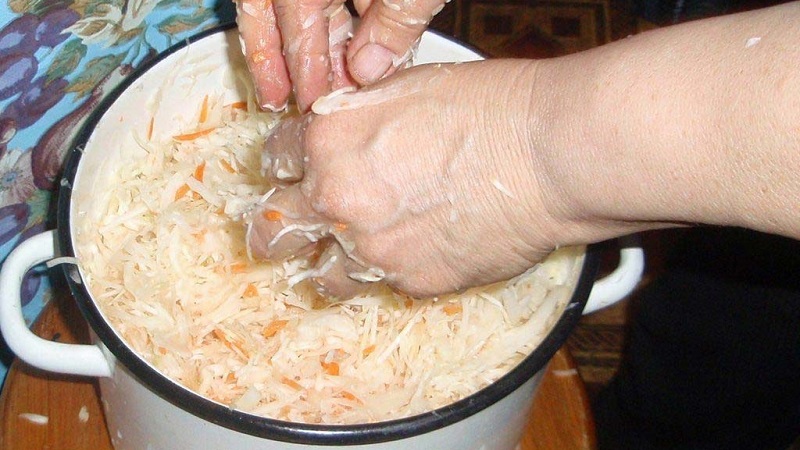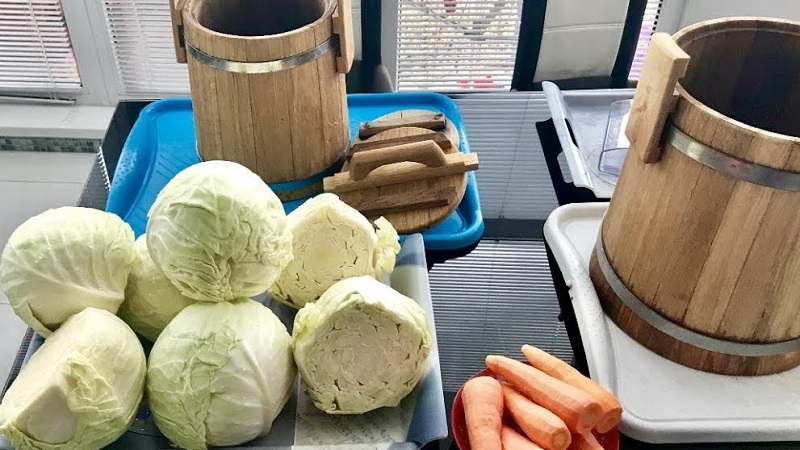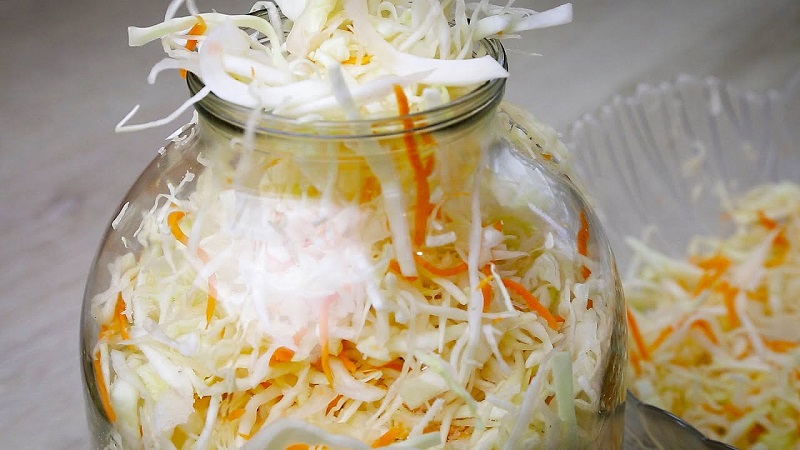Why it is impossible to salt and sour cabbage in an aluminum container
Cabbage is a popular vegetable in the kitchen, which housewives willingly harvest for the winter with the help of pickling and pickling. This tasty and healthy product contains vitamins and trace elements, normalizes the intestinal microflora.
It is important to choose the right dishes for pickles. In an unsuitable container, the snack will quickly deteriorate and even become hazardous to health. From the article you will learn which container to choose and why cabbage cannot be fermented in aluminum dishes.
The content of the article
Is it possible to ferment cabbage in an aluminum dish
Aluminum cookware is used in the kitchen for household needs due to the following advantages:
- low price;
- ease of care;
- high thermal conductivity;
- low weight;
- resistance to corrosion.
Aluminum by chemical properties - active metal... Under normal conditions, its surface is covered with an oxide film. Pure aluminum and its alloy with additions of alloying elements: manganese, lead and others are used for kitchen utensils.

Fermentation of cabbage produces lactic acid, which reacts with the alloy... The oxide film is destroyed. This negatively affects the quality of the product and is harmful to health. Due to the influence of alloy impurities, the surface of the pan dulls and becomes unusable.
If the metal is used in its pure form, then the acid destroys oxide film, impairs the quality of cabbage, causes darkening... As a result of the reaction, salts and other compounds are formed that are harmful to the body. It is undesirable to use aluminum dishes for fermentation.
To protect metal from contact with cabbage a food plastic bag or film is placed in the container.
Important! Exercise caution when using aluminum salting pans. Products are not stored in it for more than two days.
Why you can't pickle cabbage in an aluminum container
When pickling, vinegar is added to the cabbage. The surface of aluminum cookware is covered with an oxide film, which is dissolved by the acids contained in the marinade.... Unhealthy aluminum oxide remains in the snack. Therefore, cabbage in aluminum containers is not pickled.
Interesting on the site:
Can cabbage be salted in an aluminum pan with enamel
Enamel coated cookware has advantages:
- suitable for storing food;
- not subject to abrasion;
- resistant to sudden changes in temperature;
- does not rust.

In an aluminum dish with enamel, you can ferment cabbage... To do this, use a container with an intact coating. Enamel is a fragile material. Improper operation violates the integrity of the surface layer: cracks and chips are formed, exposing the metal. When pickling cabbage in such a container, aluminum interacts with acid, which impairs the taste of salting and damages health.
Attention! In a container with chips of enamel, cabbage is not fermented! Place a plastic bag in the pot for safe salting.
What is the best way to ferment cabbage
When choosing utensils pay attention to the material. There are no flaws in the container:
Wooden container
Wooden barrels and tubs are the best choice for pickling vegetables, but not every family has such utensils. It is used for large volumes of workpieces. Advantages:
- natural material;
- the product "breathes";
- the aroma of the tree complements the taste of the vegetable;
- the cabbage is crispy and firm.

Used for salting wood:
- oak;
- aspen;
- linden;
- birch;
- ate.
Barrels of aspen, linden, birch are scalded with boiling water before salting, then dried in air.
Spruce wood is filled with resins and tannins, which can darken cabbage. Before fermentation, spruce barrels are processed:
- Pour cold water into a container for 20-25 days.
- The water is changed every 5 days.
- Dried in the sun.
Clay and ceramic pots
Earthenware and ceramic dishes are also suitable for pickling vegetables... Oxidation does not occur in it, no harmful substances are formed. Containers are used for small volumes of workpieces. This method is popular in Poland and Germany.
Glass containers
Most often cabbage harvested in 3-liter cans... Usually, the dishes with cabbage are covered with a plastic lid... The air below it leads to rapid product deterioration.
The Soviet GOST allowed storing sauerkraut in glass packaging for no more than 5 days at a temperature of + 10 ° C. This drawback can be easily eliminated using a metal cover and a seamer. The air from the can displaces the brine.

Plastic buckets
Plastic buckets are produced for food and non-food products... Technical plastic contains substances that are harmful to health. Dishes made of this material are not used for salting cabbage.
To avoid trouble, follow the advice when buying:
- require a quality certificate from the seller;
- buy colorless plastic;
- the container is washed well, filled with water for a day, then dried in air;
- for safe salting, cover the bucket with a food plastic bag;
- for storage, the finished product is transferred to a glass jar;
- pay attention to the marking of food grade plastic - an icon in the form of a glass and a fork.
The purpose is sometimes indicated on the product: for bulk, hot or cold food. According to the international standard, the type of raw material is indicated on the triangle with an alphanumeric code.
Safe containers with letters PE, PETF (PET), PP, PS and numbers 6, 05 and 1... It is dangerous to use dishes without marking.
Conclusion
When choosing dishes for fermentation, they are guided by the volumes of the blanks. For small quantities, glass containers are suitable. If the volumes are large, but there is no wooden barrel, take an enamel pot or bucket. The containers are pre-inspected for cracks and chips; for safety, a bag is placed inside. It is also advisable to put cling film in plastic buckets.